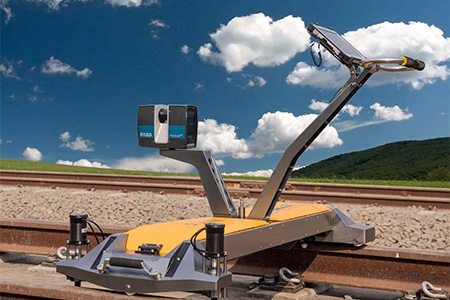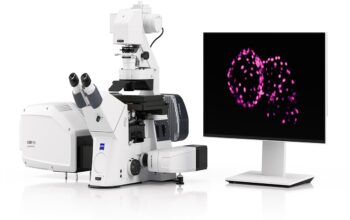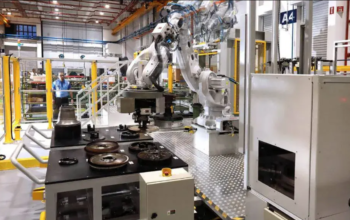Nowadays, rail transit has become an indispensable way of travel. It has been the backbone of a city’s public transportation system because of its large traffic volume, all-weather safe and fast service and less pollution. As one of the new infrastructures that China is developing vigorously, intercity high-speed railways and urban rail transit adhere to the basic principles of coordinated linkage, intensification and efficiency, and play a supporting role in urban transportation. At the same time, the government operating departments and related safety monitoring organizations have spared no effort to strengthen safe production and operation management to further promote urban rail transit construction, operation model innovation and enhance sustainable development capabilities.
Guangzhou South High-Speed Railway Surveying Technology Co., Ltd., referred to as “South High-Speed Railway”, is affiliated to South Surveying Group. With integrated R&D, production and sales, the company is committed to the localization of high-speed railway precision surveying technology and equipment. At the same time, the company has established an enterprise-level institute, South Special Precision Surveying Institute, which serves as the source of innovation with its strong independent research and development strength of software and hardware. The South High-Speed Railway is committed to providing precision surveying of structural deformation for high-speed railways, subways, tunnels, dams, slopes, etc., and provides special precision measurement solutions for mines, ports, pipelines, etc.
FARO 3D SCANNING TECHNOLOGY ESCORTS TUNNEL SAFETY INSPECTION
Over or under excavation is inevitable for tunnels excavated by methods of drilling and blasting. The administrative regulation on quality and safety of railway construction projects implemented formally on January 1, 2018 also stated the importance of initial liner and lining thickness. If not dealt with in time, these problems will not only increase the construction cost of the project, but also have a serious impact on the construction quality and operational safety of the tunnel. Water seepage, lining cracking, concrete peeling and falling off will also occur to the completed tunnel due to comprehensive factors such as geological conditions, material performance degradation, train vibration, etc., resulting in safety hazards. Therefore, safety detection has become an indispensable procedure for tunnel construction.

Tunnel construction sites.

Water seepage.

(Surveying trolley – SOUTH ALTIS)
Due to the special nature of tunnel construction, continuous operation is required during excavation, and it is difficult to have a long stoppage for surveying, which makes the real-time survey of the tunnel once an inevitable problem. The South High-Speed Railway not only has a complete set of three-dimensional solution for the station-type Laser Scannerthat is specially designed to cope with the harsh working environment, but also developed a track-moving tunnel detection system based on the FARO three-dimensional laser scanner for the metro and high-speed railway tunnel inspection during the operation and maintenance period. The South High-Speed Railway has helped many customers including Shenzhen Metro, Guangzhou Metro, and Beijing Metro to complete tunnel safety inspection tasks, providing a scientific and efficient sustainable approach to safety management.
With deep and firm root in the railway industry, the South High-Speed Railway has long begun the exploration of track detection. “We started research and development of track detection equipment in 2008. After 10 years of technology accumulating and depositing, we established a formal Monitoring Division in 2018,” Li Zhongli, the manager introduced. In 2018, the South High-Speed Railway successively purchased two FARO Focus 3D laser scanners, FocusS 350 and FocusM 70, and launched a mobile tunnel detection system based on the FARO FocusS 350. This system detects in a dynamic and uncontrolled manner with reduced dependence on the design data. It can efficiently obtain point cloud data of the tunnel and provide great data support for tunnel detection, greatly improved the work efficiency.
DIFFICULTIES AND CHALLENGES IN TUNNEL DETECTION
When it comes to over or under excavation, Li Zhongli, the manager explained that “it is very complicated and difficult to detect over or under excavation. The surveying personnel can only enter the site during the construction interval. Taking into account the safety factors and construction progress, the time during which the personnel is allowed to stay is very short.” At the stage of excavation and initial lining, the four walls of the tunnel are extremely unstable, and there is also risk of rock falling off from the vault of the tunnel. Moreover, with dim construction site, poor ventilation and dusty air, uneven road and dark trenches, it can be said that the environment is harsh.

The staff is manually collecting data of the tunnel section.

Circular orthophoto.
Before using 3D laser scanning technology, surveyors usually relied on their own experience and combined with the total station device to detect over-excavation or under-excavation. Surveyors often observe sags and crests inside the tunnel with naked eyes and use the total station device to make cross-section surveying at the obvious bulge. However, either manual estimation or surveying with total station device has its own limitations. Manual observation cannot obtain accurate and real data, and misjudgment often occurs. Although the total station device can obtain accurate data, the number of points selected in the process is limited and the interval of sections is larger. Surveying results do not conform with actual site conditions.

Over excavation and under excavation analysis.

Surveying with FARO Scanner on tripod.
FARO 3D SCANNER HELPS TO IMPROVE TUNNEL DETECTION EFFICIENCY
Within the South High-Speed Railway, FARO 3D laser scanner is mainly used for tunnel detection during tunnel construction and operation and maintenance. During construction, the amount of concrete can be calculated by over-under excavation analysis and point cloud data comparison to provide guidance for safe construction. At the period of operation and maintenance, it can provide real and reliable data support for safe traffic by detecting tunnel deformation and convergence diameter.
For detection of over/under excavation, usually the ground track has not been laid yet. The 3D laser scanner is set in the tunnel and scans the segment which need to detect over/under excavation; at the same time, the total station is used to collect spherical prism mirror coordinates for late conversion for absolute coordinates. After the data acquisition is completed, the point cloud data and the tunnel design model with absolute coordinates are both imported into the tunnel three-dimensional monitoring software, and the tunnel over/under excavation analysis and concrete amount calculation can be performed to provide effective safety guidance for tunnel construction.
The FARO scanner scans very fast, recording up to 976,000 points per second, and can finish the scanning of the inner wall of the tunnel in minutes. This not only improves the productivity of the surveyor on site, but more importantly, it can restore the inner walls of the tunnel to the most extent, thus avoiding omission of information and saving time, labor and financial costs. With a maximum scanning distance of up to 100 meters in the tunnel, the FocusM 70 is fully capable of meeting the scanning needs at the excavation phase. “After entering the site, it takes only 3-5 minutes to complete the scan,” Mr. Li said.


Surveying trolley at work.
For tunnel detection at the period of operation and maintenance, the South High-Speed Railway uses the mobile tunnel detection system based on FARO three-dimensional laser scanning technology. The mobile laser scanning technology acquires data faster than the traditional station scanning technology, and does not require data splicing. It is more suitable for tunnels with a short stoppage time at the period of operation and maintenance. With 180 meters of measurement verification, it has a mobile acquisition speed of 1.4km/h, and only needs 2-3 people for the field operation. At the same time, its relative accuracy of point cloud data can be up to 3mm.With the point cloud data being analyzed and processed by software, the surveying results of the cross-section analysis, convergence diameter, clearance section and orthophoto of the tunnel structure can be obtained.
At present, the South High-Speed Railway is cooperating with Shenzhen Construction Engineering Quality Inspection Center to carry out operation and maintenance detection for Baoan Airport section (not operated) of Guangzhou-Dongguan-Shenzhen Intercity Railway using the mobile trolley surveying technology developed by combining the FARO scanner. Shenzhen Construction Engineering Quality Inspection Center is dedicated to providing technical support for the construction administrative department to carry out administrative enforcement of law, supervision and management on the quality of construction projects, and cooperate with the municipal quality supervision organizations of construction projects to carry out work.
When on site, an engineer of the Geotechnical Department of the Shenzhen Construction Engineering Quality Inspection Center introduced: “The scanning trolley has greatly improved the efficiency of track detection.” Speaking of subsequent technical improvements, the engineer said that he hopes to further consider the influence of the slope on the fixed uniform speed and improve the accuracy of the mobile scanning, so as to obtain more optimized scanning results. For operation and maintenance detection results of the Baoan Airport section of the Guangzhou-Dongguan-Shenzhen Intercity Railway, Shenzhen Construction Engineering Quality Inspection Center has extended full affirmation.
FUTURE PROSPECTS
With strong corporate background and ever-changing customer needs, the South High Speed Railway is continuously exploring and seeking technology breakthroughs to provide more customized detection solutions for customers in the tunnel industry. In addition, with the digitization, standardization and information of tunnel scanning workflow and years of industry experience, the South High-Speed Railway expects to give full play to its industry advantages in the field of tunnel surveying and strive to standardize the process of tunnel 3D monitoring.









